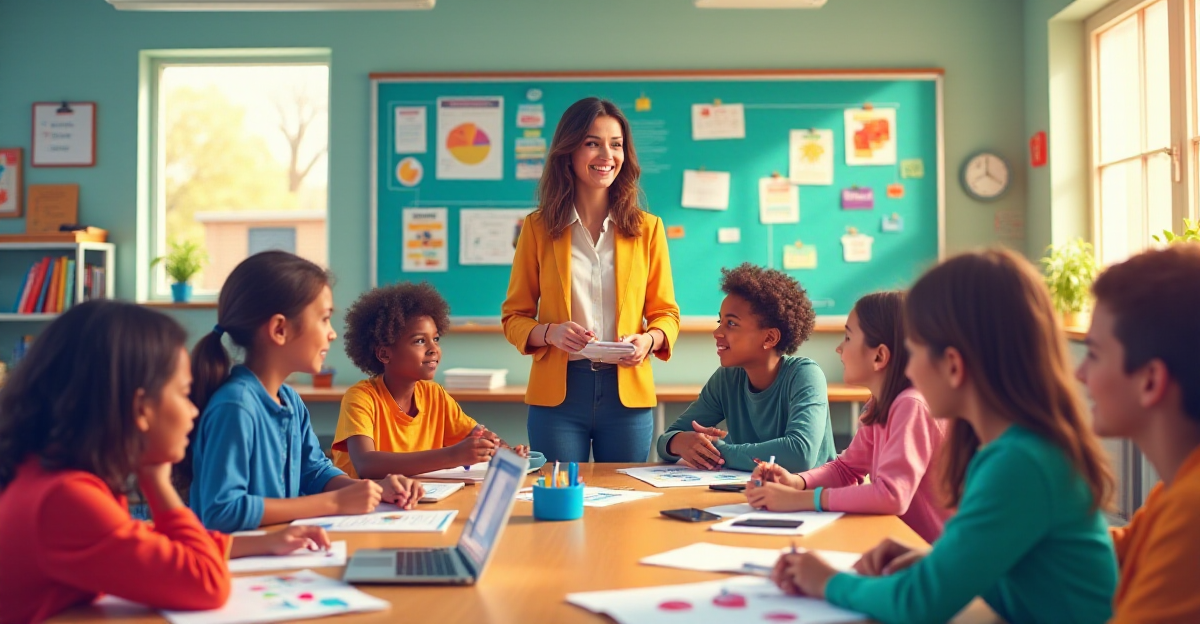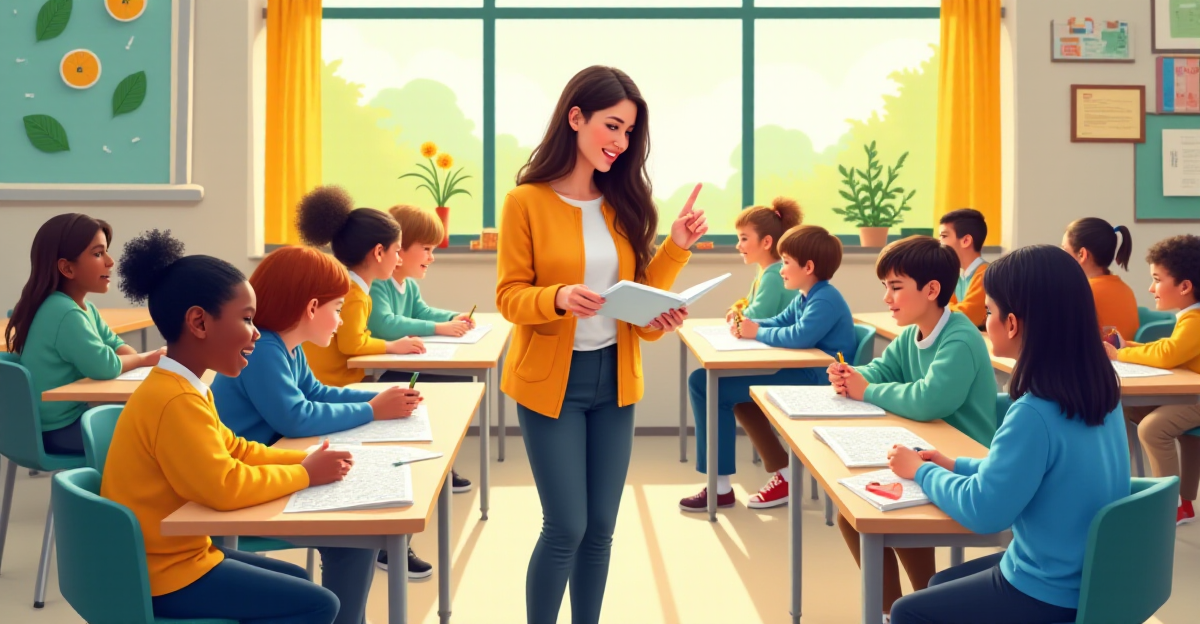Differentiated instruction helps teachers to meet the particular learning requirements of every student, therefore increasing the effectiveness and inclusiveness of education. Teachers can accommodate students’ different abilities by using tactics including varied assignments, flexible grouping, and customized help according this article. Drawing on personal teaching experiences, we investigate how varied instruction guarantees all students can succeed and increases student confidence. Teachers will learn how to create a friendly classroom where learning is catered to all student’s needs and variety is celebrated.
Table of Contents
- What is Differentiated Instruction?
- Benefits of Differentiated Learning
- Strategies for Implementing Differentiated Instruction
- Extra’s:
What is Differentiated Instruction?

Ever notice how differently students absorb knowledge? While some kids pick ideas fast, others might require more time and help. By customizing learning opportunities to fit each student’s particular need, differentiated instruction helps every student achieve. Imagine a classroom in which every student finds challenges and encouragement on their path of learning. Differentiated instruction is meant to help with this! This method of instruction honors the variety in the classroom and fosters inclusive learning whereby everyone feels important.
Teachers that employ varied education recognize that every student learns in their own particular way, so eschewing a one-size-fits-all approach. They could have various skills and limitations, learn at different rates, and favor different approaches of instruction. differentiated instruction is about celebrating these unique qualities and designing a classroom fit for everyone.
Implementing Differentiated Instruction
There are several ways teachers could vary instruction. One often used tactic is flexible grouping. Students with like needs are placed in smaller groups to handle their particular difficulties. Teachers might, for extra help or group projects, put pupils who are ahead of their peers for more demanding activities or those who are struggling with a given topic together.
Still another important tactic is personalized learning. This transcends just adjusting the learning pace. It lets students choose subjects they enjoy, create their own goals, and monitor their development, therefore enabling them to take ownership of their educational path. One-on-one tutoring, small group training, or access to internet resources let teachers offer customized support.
Seeing the Difference
Imagine a course in which students are studying the solar system. While some students might write reports, others might enjoy making models, and still others might create a film outlining many worlds. Differentiated instruction allows them to choose how they show what they’ve learned!
In my own classroom, differentiated instruction has shown great power. One of my students battled reading comprehension. I used tailored reading techniques, visual aids, and audiobooks. She started to bloom and her confidence shot as she developed the necessary skills. I also employed variable grouping techniques so she might work with colleagues facing like difficulties. This encounter showed me that we can really enable every kid to reach their greatest potential by addressing individual differences and offering customized help.
differentiated instruction is about appreciating every person’s special qualities and customizing the educational process to fit their particular needs and goals. It’s not about imparting the same knowledge to every person using the same method. It is about encouraging in every pupil a passion of learning.
Benefits of Differentiated Learning

Have you ever observed how some kids seem to fly through their homework while others struggle to keep up? Every pupil learns differently, therefore Acknowledging this reality, differentiated instruction offers a potent teaching strategy that welcomes the particular learning styles and needs of every student in the classroom. Rather than a one-size-fits-all approach, differentiated instruction honors uniqueness, lets students learn at their own speed, use their strengths, and use learning strategies appropriate for them. What, however, are the observable advantages of using this method?
Creating a More Engaging Learning Environment
Imagine a classroom in which pupils are eager to learn and actively participating. Personalized learning has this ability. Students are more likely to find the material interesting and pertinent when their instruction is tailored to their particular needs and interests. Would you be more driven to study a subject if it were presented in a manner that made sense to you? By allowing teachers to design courses catered for every student, differentiated instruction guarantees that everyone feels challenged and driven to learn. Higher degrees of motivation, more involvement, and a better classroom environment can all follow from this.
To teach a concept, for instance, a teacher could combine several exercises. While some pupils might rather engage in hands-on activities, others may find best visual aids. differentiated instruction gives the flexibility to meet these various requirements, therefore promoting a sense of accomplishment and a joy of learning in every pupil.
Enhanced Student Achievement
Differentiated instruction directly and favorably influences student performance. Teachers can efficiently close learning gaps and guarantee that every student has the chance to succeed by offering tailored support. Greater knowledge, better academic performance, and more confidence follow from students learning at their own pace and getting aid when they need it.
A teacher might, for example, apply several evaluation techniques for various students. While some may like a hands-on project, others may show their grasp by writing. This adaptability lets every student highlight their knowledge in a way that speaks to them personally. Teachers who change their approach can enable their pupils to realize their full potential independent of their learning style or background knowledge.
Addressing Challenges and Ensuring Fairness
Although differentiated instruction is a strong teaching strategy, it’s crucial to understand it’s not a silver bullet. In a big class, it can be difficult to apply and calls on educators to be innovative, adaptable, and flexible. Still, differentiated instruction offers much more advantages than any difficulties.
Its possibility to improve justice and inclusiveness in the classroom is among its main benefits. differentiated instruction can help close the achievement gap and guarantee that every student has the chance to succeed by meeting them where they are and offering them the support they need.
Empowering Students for Success
All things considered, differentiated instruction is a useful tool for educators seeking to provide an egalitarian, interesting, and efficient classroom for every student. Teachers may inspire a love of learning, increase student confidence, and equip their pupils for success in an always shifting environment by appreciating individual variations. With differentiated instruction, every student is empowered to realize their full potential so that every kid feels respected, supported, and ready to flourish in the classroom and beyond.
Strategies for Implementing Differentiated Instruction

Every teacher works to make their classroom where every student feels seen, heard, and free to learn. Reaching every student can seem like an enormous chore, though, given the varied learners in every classroom. Now enter differentiated instruction, a potent teaching strategy meant to satisfy every student’s particular demand. This approach accepts personal learning styles, talents, and shortcomings, therefore customizing each student’s educational experience. It steers clear of a one-size-fits-all approach and instead customizes training to guarantee every student feels challenged, involved, and encouraged.
Adapting Instruction for Diverse Learners
differentiated instruction is about flexibility and customizing your lesson to fit the particular requirements of your pupils; it is not a set recipe. Successful application of differentiated instruction depends on your creativity and acceptance of techniques that fit your pupils and yourself.
Effective Strategies for Personalized Learning
- Flexible Grouping: Instead of treating your classroom as a homogenous unit, consider grouping students based on their learning needs and strengths. This strategy allows you to provide targeted instruction to students who require extra support, while also challenging advanced learners with more complex materials. Imagine grouping students based on their reading level for a literature study or creating small groups to tackle specific math concepts.
- Varied Assignments: One-size-fits-all assignments can leave some students feeling overwhelmed while others might be bored. Offering a variety of assignments allows students to demonstrate their understanding in ways that resonate with their learning styles. For example, when studying a historical event, you could offer options like writing a research paper, creating a visual presentation, or designing a historical timeline.
- Personalized Learning: Encourage student agency by allowing them to set their own learning goals, choose projects that pique their interests, and actively track their progress. This empowers students to become active participants in their learning journey. Think about allowing students to select from a menu of research topics or design their own science experiments based on their interests.
- Visual Aids: Many students thrive when learning is presented visually. Incorporating pictures, diagrams, videos, and other visual aids can make complex concepts more accessible. When teaching about the human body, consider using anatomical models or interactive simulations.
- Auditory Learning: Provide audio resources like audiobooks, podcasts, or lectures to engage auditory learners. For a history lesson, instead of only relying on textbook readings, consider playing audio recordings of historical speeches or documentaries.
- Kinesthetic Learning: Keep kinesthetic learners engaged through hands-on activities, movement, and interactive games. You could have students build a model of a volcano while learning about volcanic eruptions or create a dramatic reenactment of a historical event.
Using differentiated instruction and these techniques will help you design a classroom that meets every student’s particular learning style and need. Recall that differentiated instruction is about giving every student a more interesting and successful learning environment rather than about making additional work for oneself.
Extra’s:
To further explore the ways in which we can tailor learning experiences to meet the unique needs of our students, you might find it beneficial to read our posts on “Exploring the Benefits of Outdoor Learning for Students” and “Bringing Mindfulness to the Classroom for Better Focus and Learning.” Both of these posts delve into strategies that can be implemented alongside differentiated instruction to create a more holistic and engaging learning environment for all.
For additional resources and insights on differentiated instruction, consider visiting these external links: “Use PLT and Differentiated Instruction to Reach Diverse Learners” and “Differentiated Instruction and How to Implement It | Learning A-Z.” These resources offer practical guidance and real-world examples of how to effectively implement differentiated instruction in diverse classrooms.












1 thought on “The Power of Differentiated Instruction in Diverse Classrooms”